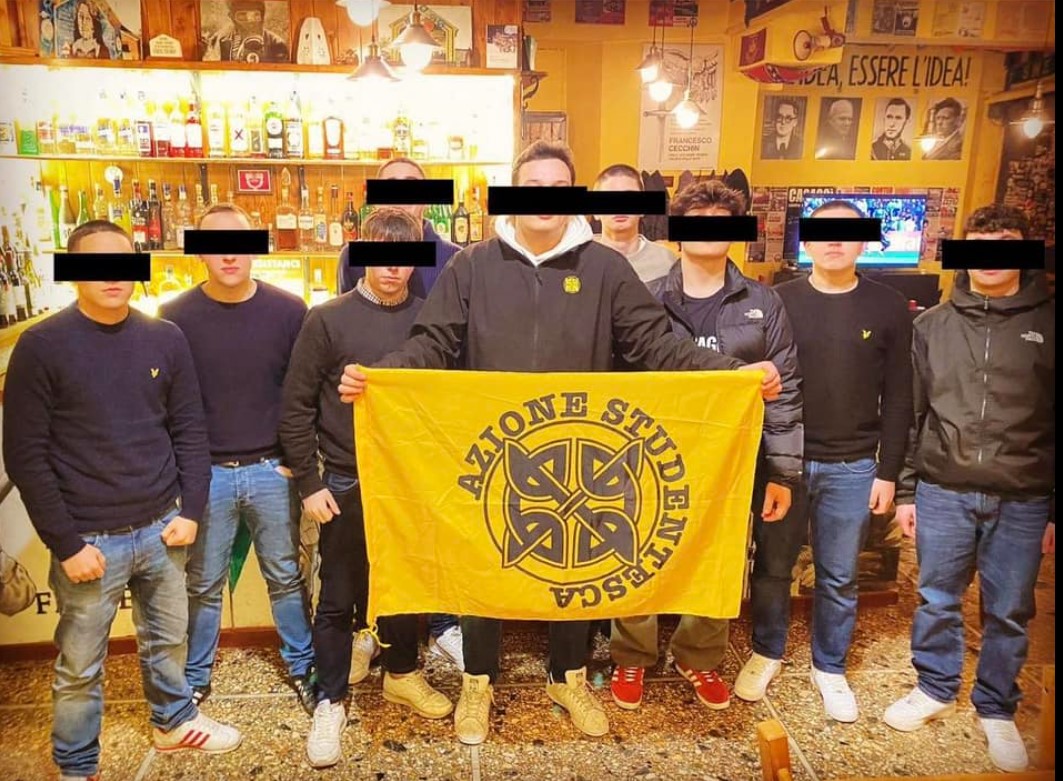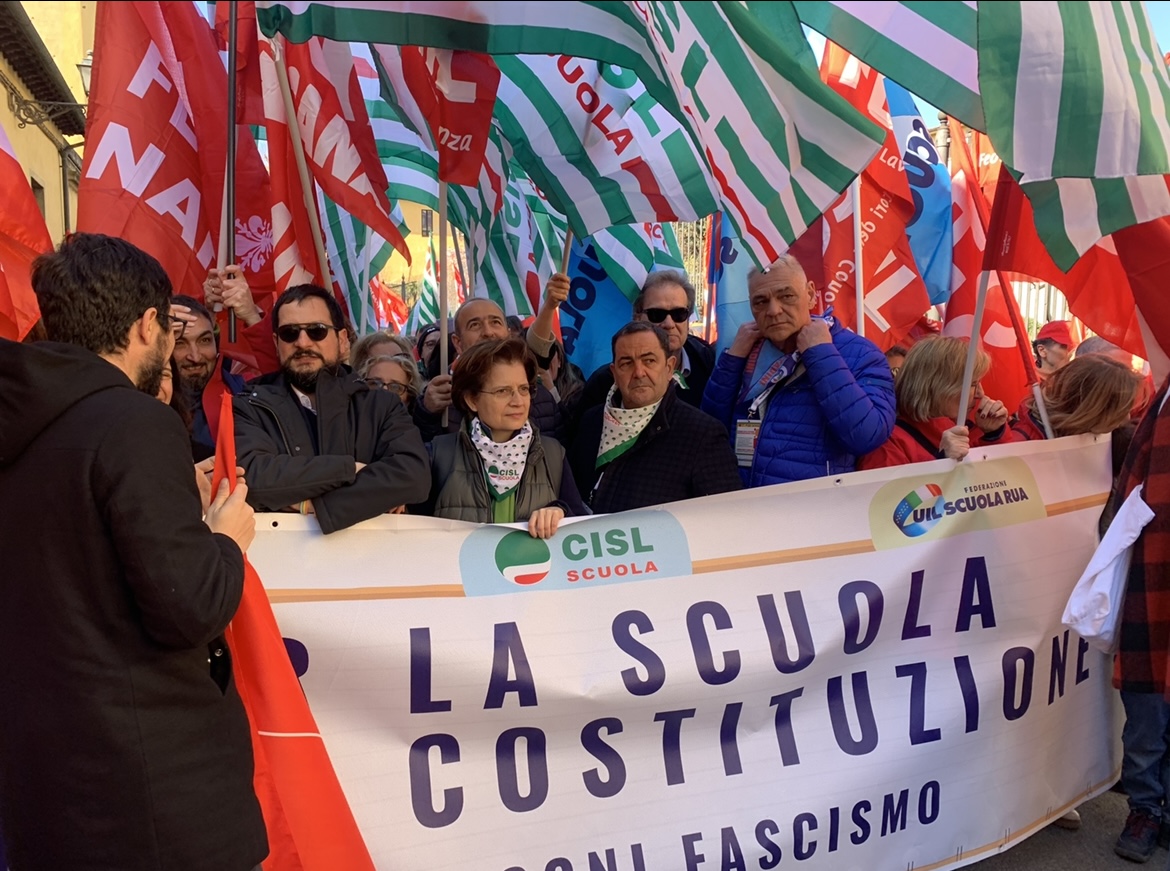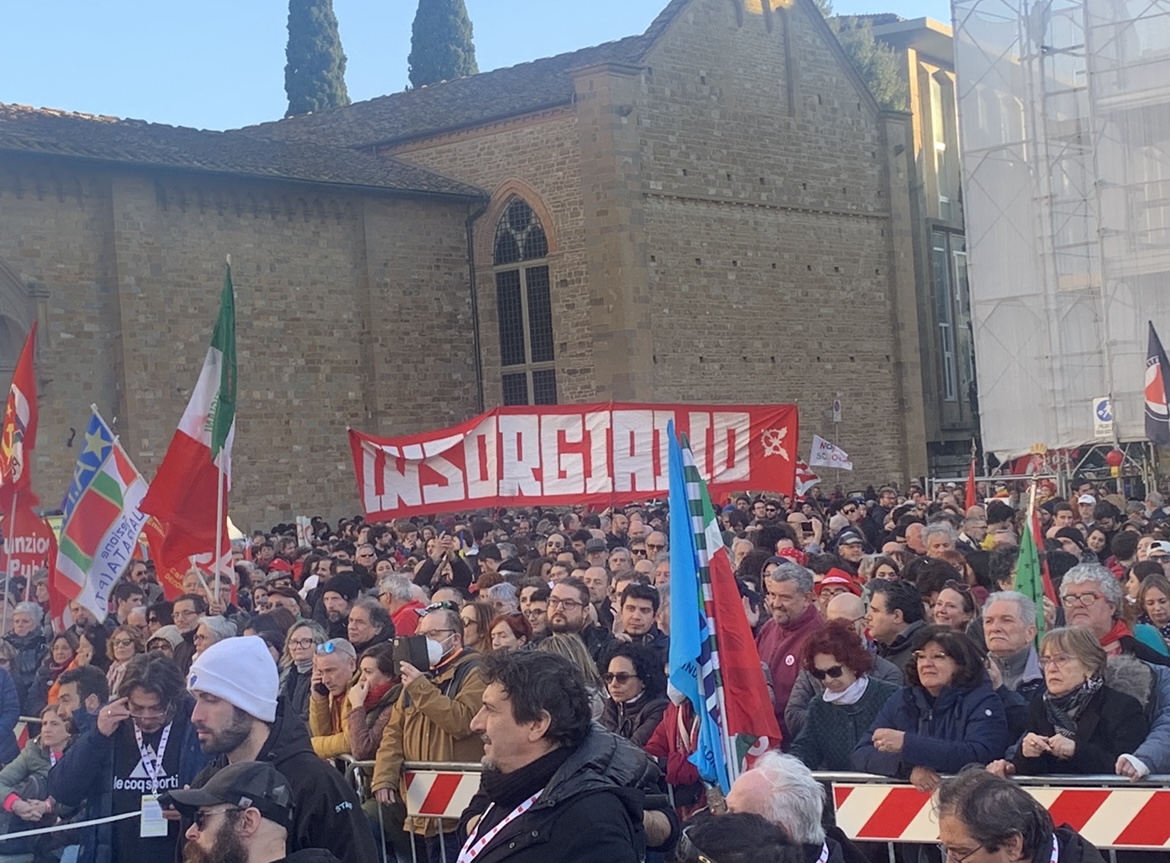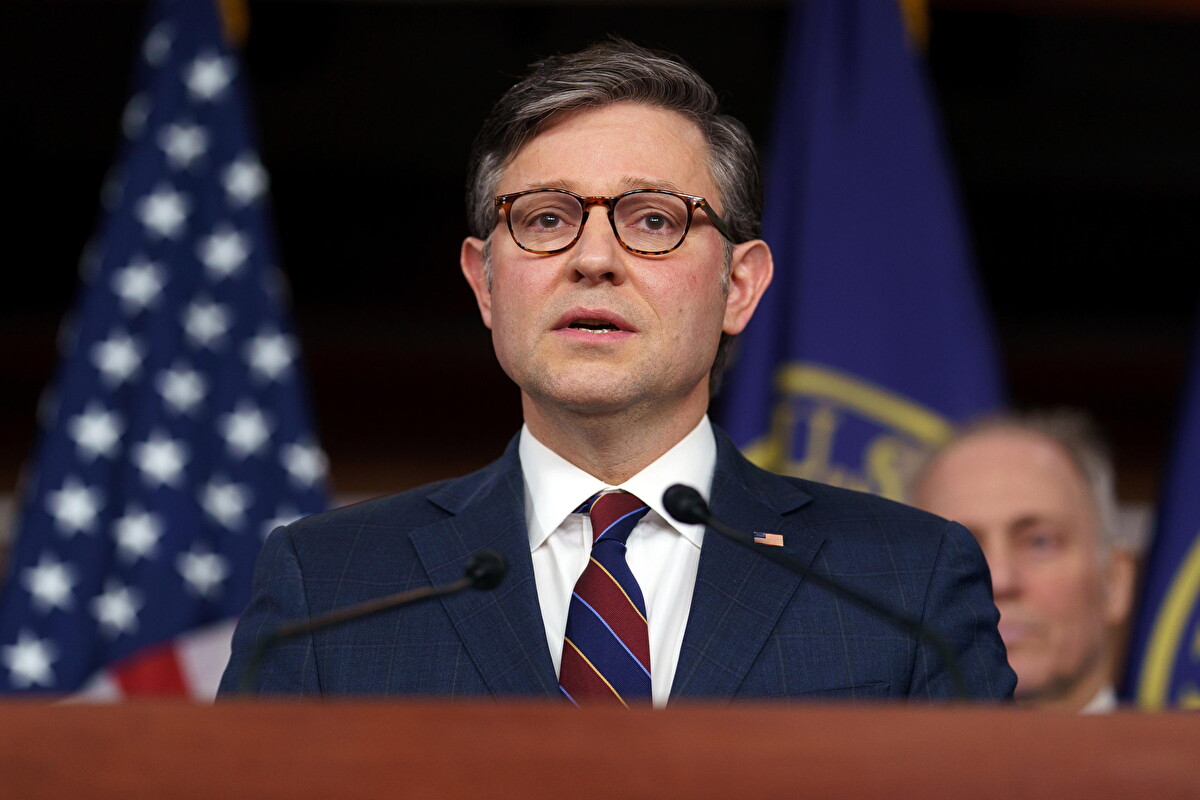An estimated 20,000 people gathered in Piazza Santa Croce, in the heart of Florence’s old city, for a rally “in support of the constitution and education,” organized by a coalition of Italy’s largest worker unions. The event is in response to an attack by a right-wing youth group against students that took place on February 18th in front of Michelangiolo high school, just before the start of the school day.
Three right-wing Azione Studentesca (“Student Action”) members were pamphleting in front of the high school, without having gone through the mandatory step of announcing the activity to the local authorities. When two students from the school who were part of a left-wing student group (called Collettivo SUM, “SUM Collective”) approached, the pamphleteers immediately attacked them and were joined by three others nearby. A video of the incident posted on social media has since gone viral, showing a student on the ground being pummeled in front of the school entrance, as a teacher yells “What are you doing?” in disbelief. Azione Studentesca brands itself on Facebook as “the right-wing Identitarian movement in schools. A militant alternative.” 3 of the attackers were minors, all were between the ages of 17 and 20.
 The attack has sparked major reactions in the largely left-wing city of Florence, and has become a topic of political discussion across the country. As soon as February 21st, a march in Florence was organized with hundreds in attendance, chanting “Florence will always be antifascist” as they moved through the city center. Florence mayor Dario Nardella did not mince his words in his response the day after the attack: “From what I can tell it was a straight-up beating. […] My hope is that, and I say this as a mayor that represents the whole city, that all political forces – none left out, so I mean the right wing as well – condemn what occurred in the clearest manner, with no ifs or buts.”
The attack has sparked major reactions in the largely left-wing city of Florence, and has become a topic of political discussion across the country. As soon as February 21st, a march in Florence was organized with hundreds in attendance, chanting “Florence will always be antifascist” as they moved through the city center. Florence mayor Dario Nardella did not mince his words in his response the day after the attack: “From what I can tell it was a straight-up beating. […] My hope is that, and I say this as a mayor that represents the whole city, that all political forces – none left out, so I mean the right wing as well – condemn what occurred in the clearest manner, with no ifs or buts.”
The response from the highest levels of government has been tepid. Italian prime minister Giorgia Meloni took days to issue any kind of response and her political opponents, like Emilia-Romagna’s Elly Schlein, have called her out for her “silence.” After the principal of the Michelangiolo high school, Annalisa Savino, wrote an open letter to her students warning them of creeping signs of fascism and the need to take action, the Italian minister of education Giuseppe Valditara stated “In Italy there is no violent and authoritarian drift, there is no risk of fascism returning.”

The rally started with a march down Via Colonnata, right past Michelangiolo high school. Luca Comiti, a union leader with CGIL, Italy’s largest workers union, came from Liguria to attend the event. The lack of urgency from leadership has him frustrated: “We’re here because believe what happened on the 18th is extremely serious. And not just the event itself, but the subsequent statements from the minister of education were very concerning as well.” He worried that these kinds of events were a bellwether for Italy’s overall political climate going forward: “There are a lot of clear signs emerging today that we’re going backwards. We can’t allow it. Things that used to be condemned are re-emerging, and this time with institutional backing, and this shouldn’t happen. This can’t happen in a country like Italy.”
Some are already organizing at the grassroots level to specifically to counteract such a trend, like Cristian Boeri, an organizer with the CARC (part of the communist party coalition): “We’re convinced that effective mobilization against fascist forces has to come from the ground up,” he says as he hands out his party’s newspaper to rallygoers.

Conscious that communists don’t hold many positions of power, he sees their position as one of lobbying the Partito Democratico, Italy’s main center-left party: “We believe that the base needs to push its leaders to be ready to propose meaningful action that will shut down the bases of fascist organizers, starting with Casaggì.” Casaggì is a base of right-wing political organizing in Florence, including Azione Studentesca.
When the march reaches Piazza Santa Croce, the crowd has taken over every inch of space, as the square and the streets spilling out at all ends are packed. Among those attending are Elly Schlein, the new PD leader, and mayor Dario Nardello. Speakers from student groups and unions and the like take the stage, reminding the audience of modern Italy’s antifascist roots and calling for renewed urgency in the face of fascism. Tommaso Montanari, an academic and essayist, warns that “there is big gray zone of complicity with fascists” in the political sphere that must be undone. He also stresses the importance of not stooping to violent tactics: “today, antifascism and nonviolence must be one and the same.”
One of the last speakers is Gianfranco Pagliarulo, president of the National Association of Italian Partisans. While Montanari criticized the leniency given to right-wing extremists forces for the sake of political expediency, Pagliarulo highlights the closeness between those extremists and supposedly more mainstream political parties: “Do you know where Casaggì’s headquarters are in Florence? Via Frusta 37. Do you know where Fratelli D’Italia’s (Prime minister Giorgia Meloni’s party) headquarters are in Florence? Via Frusta 37. It’s the same organization.”










